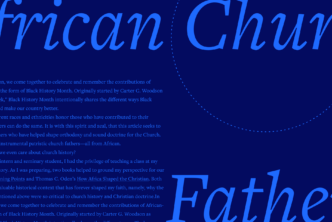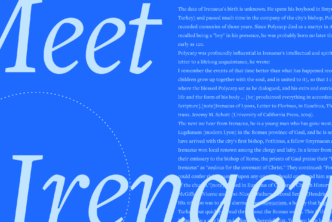The Apocrypha is a closed collection of Jewish writings composed mostly during the “intertestamental” period, from as early as 300 BC to AD 100. They are deemed part of the biblical canon by many Christians, including Roman Catholics, the Eastern Orthodox, and some Anglicans. However, most Protestants consider them outside the biblical canon, though still useful for understanding the time between the Old and New Testaments.
- What is the Apocrypha?
- Why is the Apocrypha important for biblical studies?
- Where can I read the Apocrypha?
- What additional resources are available for studying the Apocrypha?
What Is the Apocrypha?
In the time between the completion of the Old Testament and the writing of the New Testament, a number of Jewish texts were composed that continue to impact the Church today. Most were originally composed in Hebrew or Aramaic, although they have all been preserved in Greek as found in the old Greek codices, including Vaticanus, Alexandrinus, and Sinaiticus. Although many early Jews—including the authors of the New Testament—knew of the apocryphal writings, they are not cited by Philo or any of the apostles. The earliest example was probably written around 180 BC, and the latest around AD 100. Thus the Apocrypha function as a “bridge” between the last writings of the Old Testament, namely the Prophets, and the New Testament.
The apocryphal writings included in various denominational lists differ, but in general the list includes the following 21 texts:
- Tobit (or Tobias)
- Judith
- Additions to Esther
- Wisdom of Solomon
- Sirach (also known as Ecclesiasticus or Wisdom of Ben Sira)
- Baruch
- Letter of Jeremiah
- Additions to Daniel
- Prayer of Azariah
- Song of the Three Young Men
- Susanna
- Bel and the Dragon
- 1 Maccabees
- 2 Maccabees
- 3 Maccabees
- 4 Maccabees
- 1 Esdras (also 3 Ezra or 2 Esdras)
- 2 Esdras (also 3 Esdras or 4–6 Ezra)
- Prayer of Manasseh
- Psalm 151
- Odes
Why Is the Apocrypha Important for Biblical Studies?
Although little is known about the actual authorship, origins, or immediate historical contexts of the books of the Apocrypha, they do provide us with invaluable information regarding Jewish thought in the time leading up to the life of Jesus and the destruction of the Temple in AD 70. The books are unique in and of themselves, and while there is some overlap in terms of theological, sociological, and cultural themes, the differences are pronounced in terms of characters, plot, and length. So while both Tobit and Judith agree in their glowing portrayal of fidelity to God’s laws, the main characters and the actions they undertake to remain faithful to God are markedly different. Each book has special content and a unique message that must be considered when determining its value for informing biblical studies.
The Apocrypha are beneficial for biblical studies in three areas. Study of the Septuagint requires a familiarity with the Apocrypha since they constitute a large portion of the text. Because the Greek text of the Apocrypha is a translation of Hebrew and other Semitic source texts, these writings play a significant role in our attempts to understand ancient translation practices, including syntax and vocabulary choices. Study of the Gospels benefits from a strong familiarity with the Apocrypha because they are witnesses to traditions that were part of the Jewish worldview at the time of Jesus—especially how Jews related to their non-Jewish neighbors (or oppressors), their relationship to the Law, and their view of idols. Study of New Testament themes such as justification by faith, the end times, or angels necessitates a solid grasp of certain books of the Apocrypha in which related issues are discussed. For example, angels play a significant role in the story of Tobit, and in the Wisdom of Solomon, final justification is tied to obedience to God’s laws. Prayer is another significant theme addressed throughout most of the narrative books and is especially prominent in Judith, the Maccabees, and the Additions to Daniel.
Where Can I Read the Apocrypha?
You can read the Apocrypha in many Bible translations, including earlier editions of the King James and the Revised Standard Bible and now the Lexham English Septuagint. The ESV committee produced a new translation of the Apocrypha a few years ago published by Oxford University Press and printed alongside the ESV. (Although out of print, copies are available online.)
Additional Resources
Video lectures
- #askatheologian: What Are the Apocryphal Books? Professor Tom O’Loughlin of the University of Nottingham gives a historical theologian’s perspective on the various meanings of the word “apocrypha” in Christian discourse and how it can never be used in a neutral sense.
- Writings Ostensibly outside the Canon James Charlesworth presented a Hayward Lecture on writings outside the canon at Acadia Divinity School in 2006, addressing the important issue of the relationship between the Apocrypha and the biblical canon.
Commentaries and essential monographs

Introducing the Apocrypha
In this second edition of Introducing the Apocrypha, David deSilva expands on his acclaimed first edition with the latest research and insights. This is the most thorough introduction available and essential reading for anyone working in or reading the Apocrypha.

Anchor Yale Bible Old Testament (AYB)
The 61-volume AYB is one of the most trusted commentary series in existence. The Old Testament collection includes commentaries on the Apocrypha by leading scholars in their field.

Septuagint Commentary Series
This 13-volume series by Brill is focused on the Septuagint, and includes a number of commentaries on individual books in the Apocrypha, including 1 Esdras, 3 Maccabees, 4 Maccabees, Baruch and the Epistle of Jeremiah, and Tobit. More volumes on the Apocrypha are in the works.

R. H. Charles Studies on Apocryphal and Apocalyptic Texts
This 13-volume set by the esteemed scholar of ancient Judaism R. H. Charles contains classic studies that discuss the authenticity of the Apocrypha and its relationship to the New Testament.

Invitation to the Apocrypha
Daniel J. Harrington’s Invitation to the Apocrypha uniquely offers a helpful primer on every book in the Old Testament Apocrypha but also discusses the problem of suffering—and how each book addresses that problem for its readers in their ancient context and today.
Other resources
- apocrypha.org
This free reading resource includes the Brenton Septuagint, the King James Version, and the World English Bible. - Sacred Texts
Sacred Texts is another free resource to access the Apocrypha online - Between the Testaments
Additional Logos Resources

Cascadia Syntax Graphs of the Septuagint Deuterocanon and Apocrypha
Cascadia Syntax Graphs of the Septuagint Deuterocanon and Apocrypha presents the complete text of the Septuagint in graph from to help visualize the syntactic relationships between words and find similar grammatical arrangements across the entire corpus of apocryphal literature.

The Grammar of Septuagint Greek
The Grammar of Septuagint Greek is a necessary resource for approaching the somewhat unique syntax of the original language text of the Apocrypha.

A Greek-English Lexicon of the Septuagint
A Greek-English Lexicon of the Septuagint is the essential resource for reading the Apocrypha in the original languages.

The Apocrypha
In The Apocrypha, David deSilva provides a brief introduction to and summary of each book in the Old Testament Apocrypha and then demonstrates the impact of these writings on Jesus, the early Church, and the development of Christian theology.
Logos Courses

BI291 The Apocrypha: Witness between the Testaments
This 8-hour course, taught by David de Silva, concentrated on the Apocrypha itself. He introduces every book in the corpus, relates these to the New Testament, and examines their history within the Church and canon.

Craig A. Evans New Testament Backgrounds Bundle
The New Testament Backgrounds Bundle course is six hours of teaching by one of the most esteemed Christian scholars in the world today. In this course, Evans explains the value of the Apocrypha in grasping the social and religious context in which Jesus lived and how the intertestamental literature relates to particular passages in the Gospels.

NT202 A Survey of Jewish History and Literature from the Second Temple Period
In this 10-hour course, Joel Willitts examines important moments in Jewish history and literature in the critical time period including the writings of the New Testament and features discussion of the Apocrypha.






